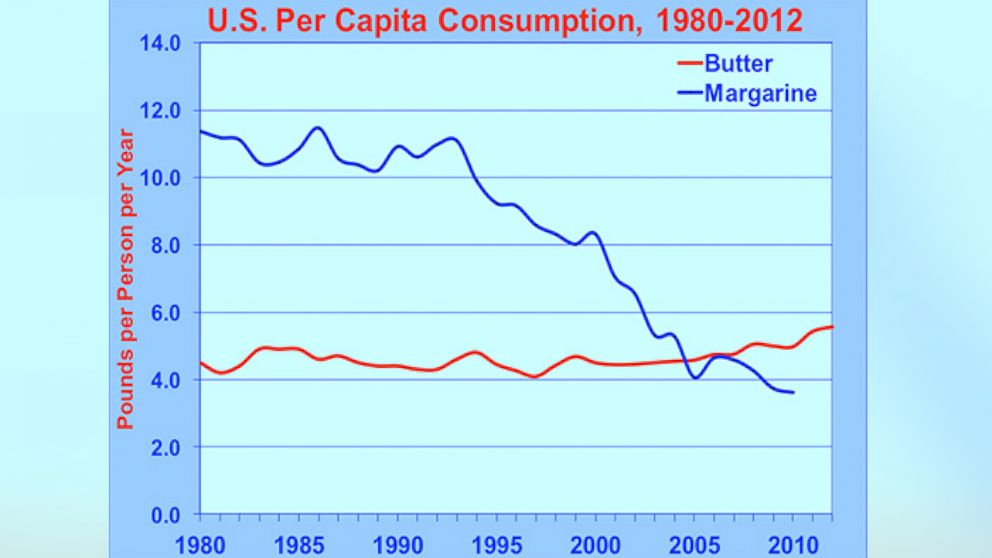Slather It, Baby! Butter Consumption Hits 40-Year High
Butter consumption, up 25 percent in the past decade, has hit a 40-year high.

Jan. 9, 2014 -- Butter's back—and with a creamy vengeance. Foodies extol its flavor. Purists praise its freedom from trans fats. Annual per capita butter consumption in the U.S. (now 5.6 pounds), has risen 25 percent in the last decade to a 40-year high, according to American Butter Institute.
"Our sales have been growing by double-digits every year," says Albert Straus, owner of the Straus Family Creamery, whose cows graze the bucolic hills above Tomales Bay, in western Marin County, Calif. Staus' European-style butter has proved incredibly popular, he says, especially among chefs.
It was created 20 years ago at the suggestion of famed California chef Alice Watters, who wanted a locally-produced European-style butter with high fat content (85 to 87 percent, in Straus' case).
Straus tells ABC News he sold 500,000 pounds of high-fat, gourmet butter last year, a quarter more than he did five years ago.
Meantime, nationwide, margarine sales have been in free fall since 1995.
Margarine once was viewed as a healthier, lower-calorie alternative to butter. But margarines typically contain trans fats, which research has shown to increase the risk of heart attack by reducing levels of HDL cholesterol (so-called "good" cholesterol).
FDA declares trans fats potentially unsafe
In November the Food and Drug Administration, after years of study, determined trans fats not to be safe any longer for use in food. Some producers, including Unilever, have already removed trans fats from their spreads.
Like margarine, butter is rich in fat—but it's all-natural fat, not trans fat. That's one reason boosting butter's sales, according to the ABI. Institute vice president Anuja Miner says another is the "foodie" revolution: "A whole generation of kids, now, is growing up with the Food Network," she tells ABC. "There are more gourmet cooks—both men and women."
Consumers are more aware than ever before of what they're putting in their mouths. Referring to margarine and butter, she says, "Read the labels: You don't have to be a rocket scientist to see the difference between the two products."
Falling prices don't explain butter's renaissance. Margarine has been--and remains--the cheaper spread. That's especially true for gourmet butters, such as Staus' European-Style Organic Butter, which Albert Straus admits does not compete on price.
"It never has been cheap," he says. "The price has gone up, now, to between $6.49 and $7.99 a pound—sometimes double what conventional butter costs." It sells, he says, because more consumers are willing to pay a premium for the real thing--especially if it's organic, free from pesticides and GMOs.
Paula Deen's ooey-gooey butter layer cake
Marie Conroy of a San Francisco declares herself a butter connoisseur. Conroy waxes poetic about her favorite brands, which include Kerrygold Irish butter, French butter from Brittany, and Straus' European-style, which she cooked with for the first time this Christmas.
Premium butters, like premium wines, she says, take on the flavor of their terroir: the grasses eaten by Irish cows impart to their milk (and to the butter made from it) a flavor different from the grasses eaten by Brittany's cows or by Marin's. Somebody with a sensitive palate can tell the difference. Hers can, she says.




